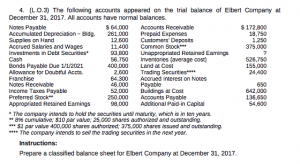Content

Though bearer bonds can no longer be issued, there are still some in circulation that were issued while interest rates were higher. A law in 2010 in the United States allowed banks and brokerages to be relieved from the responsibilities to redeem the bonds. Bearer bonds began in the United States after the Civil War when the U.S. government was trying to rebuild its infrastructure and pay creditors for war materials (uniforms, guns, etc.). The bonds became a sort of legal tender because they could be conveyed to another person for face value without any formal transfer process. Over time people found ways to exploit bearer bonds, using them to launder money and for other illegal purposes, causing the U.S. government to prohibit their use.
This is because sometimes the elderly forget where the bearer bonds are located and do not provide instructions on where to find the physical certificates. There are also significant risks to buying bonds, including the risk of not getting paid and the risk of theft. Instruments that facilitate money laundering and tax evasion may bring on problems that you don’t want to have. Plus, modern bearer bonds issued by developed nations can have less favorable terms than registered bonds.
Other Government Sites
This method of creating zero coupon bonds is known as stripping, and the contracts are known as strip bonds. “STRIPS” stands for Separate Trading of Registered Interest and Principal Securities. Bearer bonds, because they are unregistered, are technically owned by whoever is holding them. Because they were produced in denominations higher than common currency ($640,000,000 issues in the Nakatomi vault), they were often used to more easily transfer exorbitant sums of money. Near the end of the 1970s, the parties most using these types of bonds were primarily engaged in illegal activities.

A bearer bond is a fixed-income security that is owned by the holder, or bearer, rather than by a registered owner. The coupons for interest payments are physically attached to the security. The bondholder is required to submit the coupons to a bank for payment and then redeem the physical certificate when the bond reaches the maturity date. A bearer bond or bearer note is a bond u.s. treasury bearer bonds or debt security issued by a business entity such as a corporation or a government. As a bearer instrument, it differs from the more common types of investment securities in that it is unregistered—no records are kept of the owner, or the transactions involving ownership. Whoever physically holds the paper on which the bond is issued is the presumptive owner of the instrument.
Treasury Services Resources
Many governments issue inflation-indexed bonds, which protect investors against inflation risk by increasing the interest rate given to the investor as the inflation rate of the economy increases. Inflation linked bonds are those in which the principal amount and the interest payments are indexed to inflation. The interest rate is normally lower than for fixed rate bonds, with a comparable maturity. However, as the principal amount grows, the payments increase with inflation. Treasury Inflation-Protected Securities and I-bonds are examples of inflation linked bonds issued by the U.S. government. For example equity-linked notes and bonds indexed on a business indicator or on a country’s gross domestic product .
Justice Department after the firm was accused of helping American citizens evade taxes using bearer bonds. They are traded over the counter, instead of on a stock exchange. In Europe, most FRBs are liquid, as the biggest investors are banks. In the United States, FRBs are mostly held to maturity, so the markets aren’t as liquid.
US Regulation Limit Bearer Bonds
The issuer of the bearer bond does not keep any records of the bond’s ownership, and interest payments or principal repayments are made to the person who presents the bond for payment. Zero-coupon bonds may be created from fixed rate bonds by a financial institution separating (“stripping off”) the coupons from the principal. In other words, the separated coupons and the final principal payment of the bond may be traded separately. Investment banks or dealers separate coupons from the principal of coupon bonds, which is known as the “residue,” so that different investors may receive the principal and each of the coupon payments.
What is a US bearer bond?
A bearer bond is a fixed-income security that is owned by the holder, or bearer, rather than by a registered owner. The coupons for interest payments are physically attached to the security.
